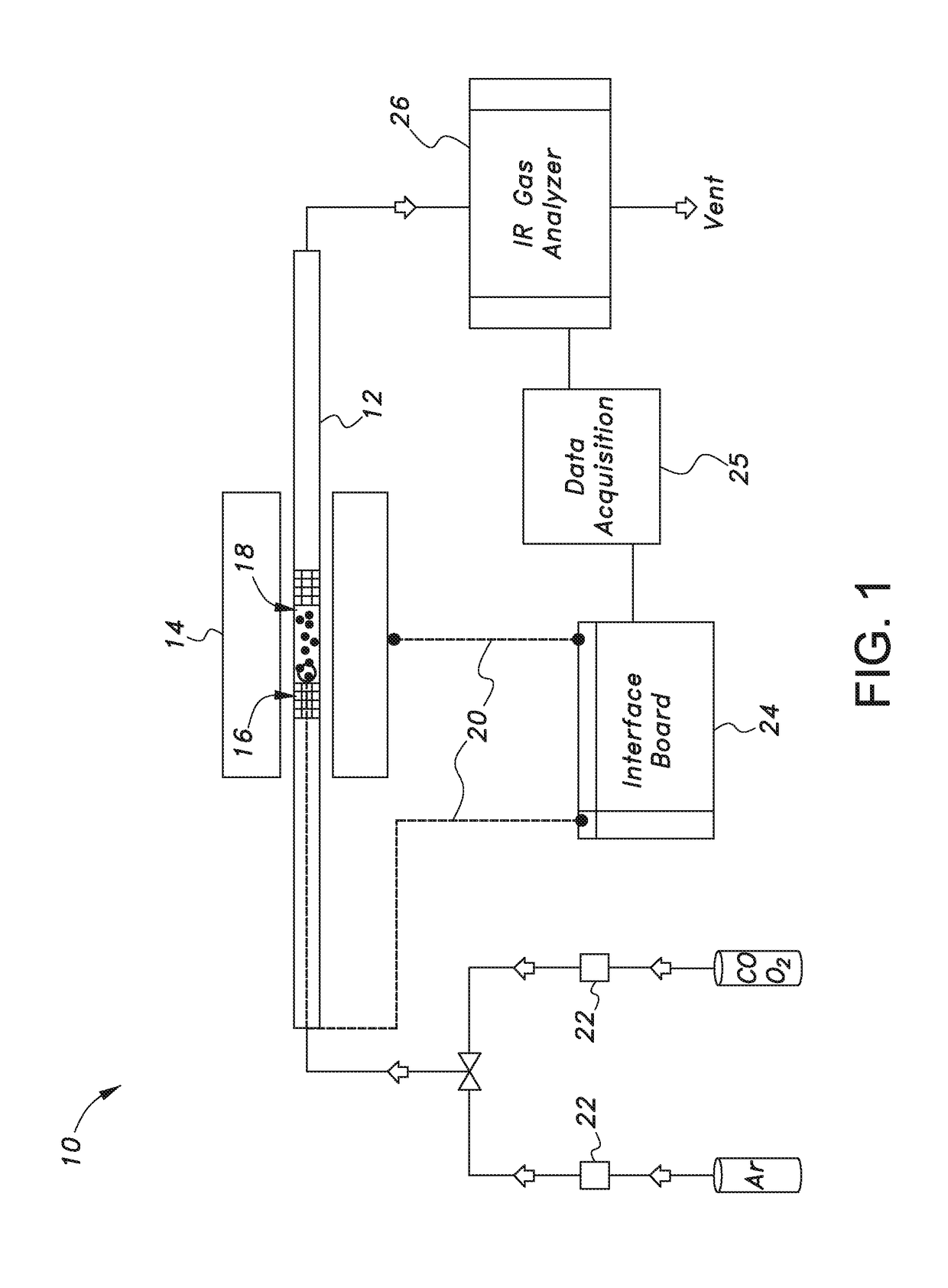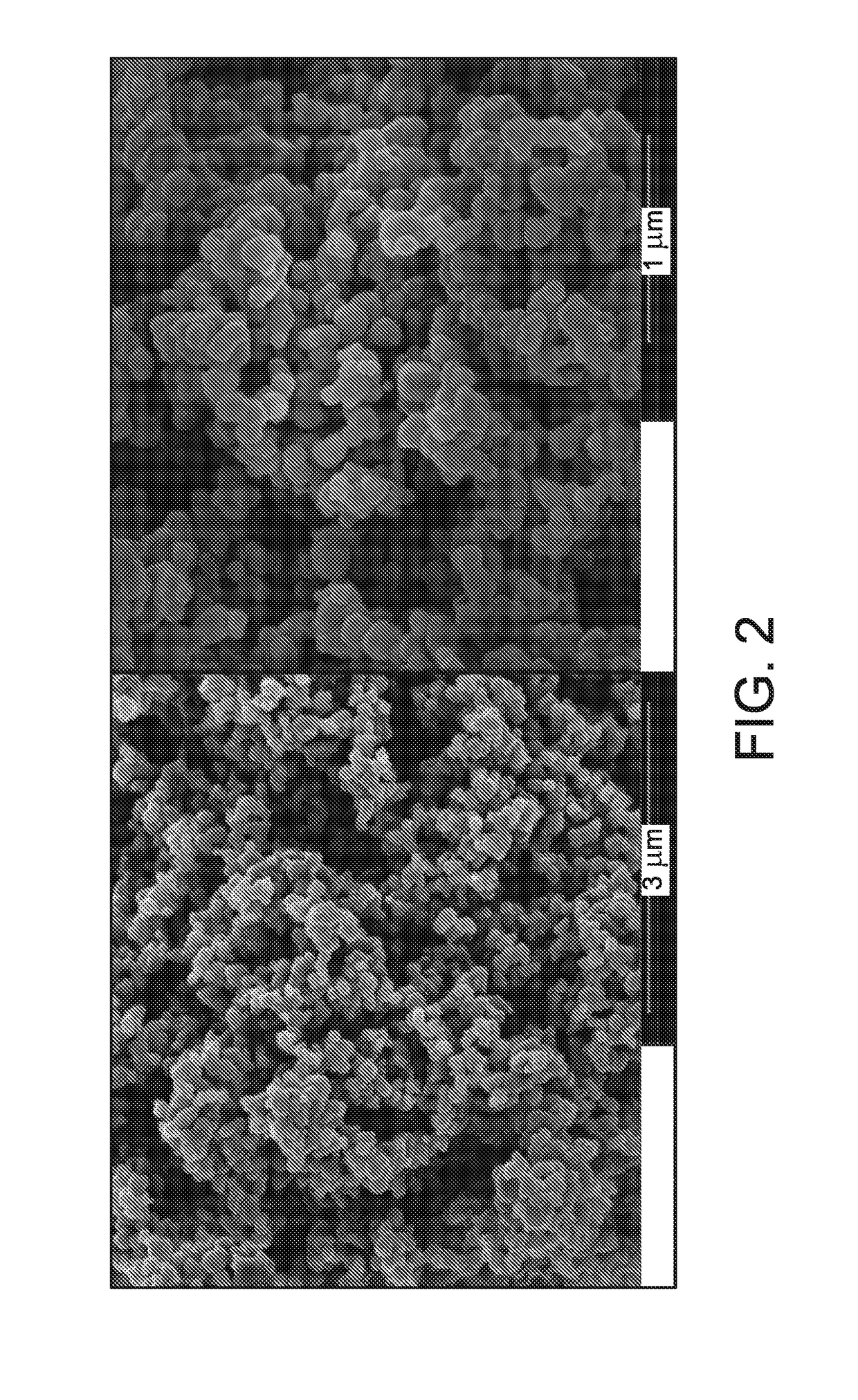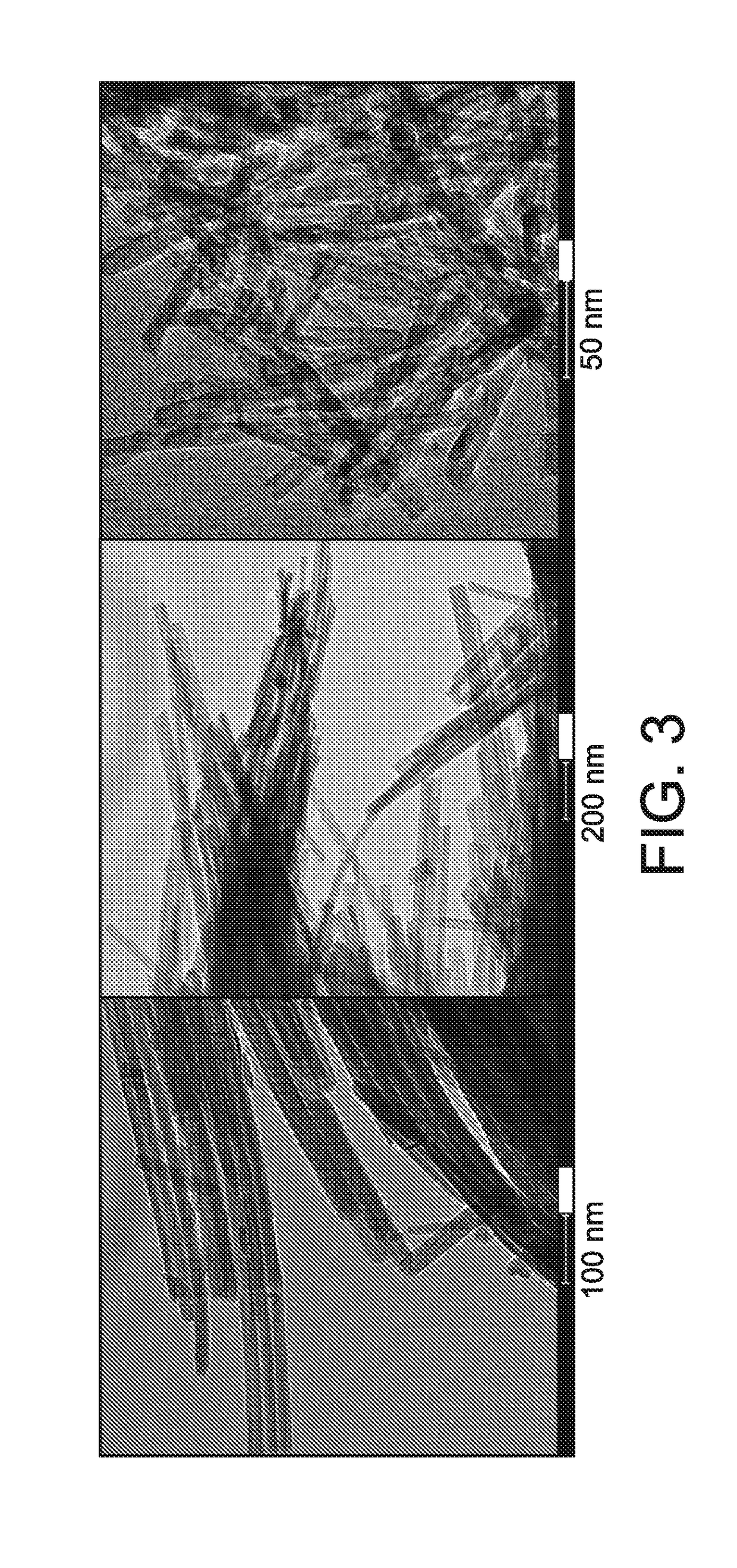Method of making a copper oxide-titanium vdioxide nanocatalyst
a nanocatalyst and copper oxide technology, applied in physical/chemical process catalysts, metal/metal-oxide/metal-hydroxide catalysts, separation processes, etc., can solve the problems of low production efficiency, low cost, and inability to oxidize and sinter particles
- Summary
- Abstract
- Description
- Claims
- Application Information
AI Technical Summary
Benefits of technology
Problems solved by technology
Method used
Image
Examples
Embodiment Construction
[0034]The method of making a copper oxide-titanium dioxide nanocatalyst is a process for preparing a catalyst for performing catalytic oxidation of carbon monoxide. The copper oxide-titanium dioxide nanocatalyst is in the form of copper oxide (CuO) nanoparticles supported on mesoporous titanium dioxide (TiO2) nanotubes. The copper oxide-titanium dioxide nanocatalyst is prepared by adding an aqueous solution of Cu(NO3)2.3H2O to an aqueous suspension of titanium dioxide nanotubes. Deposition precipitation at constant alkaline pH is used to form the copper oxide nanoparticles supported on mesoporous titanium dioxide nanotubes. Aqueous sodium carbonate is used to adjust the pH. The solid matter (i.e., copper oxide deposited on titanium dioxide nanotubes) is separated from the suspension, washed, dried and calcined, yielding the copper oxide-titanium dioxide nanocatalyst. Carbon monoxide may then flow over a fixed-bed reactor loaded with the copper oxide-titanium dioxide nanocatalyst at ...
PUM
| Property | Measurement | Unit |
|---|---|---|
| pH | aaaaa | aaaaa |
| temperature | aaaaa | aaaaa |
| pH | aaaaa | aaaaa |
Abstract
Description
Claims
Application Information
 Login to View More
Login to View More - R&D
- Intellectual Property
- Life Sciences
- Materials
- Tech Scout
- Unparalleled Data Quality
- Higher Quality Content
- 60% Fewer Hallucinations
Browse by: Latest US Patents, China's latest patents, Technical Efficacy Thesaurus, Application Domain, Technology Topic, Popular Technical Reports.
© 2025 PatSnap. All rights reserved.Legal|Privacy policy|Modern Slavery Act Transparency Statement|Sitemap|About US| Contact US: help@patsnap.com



